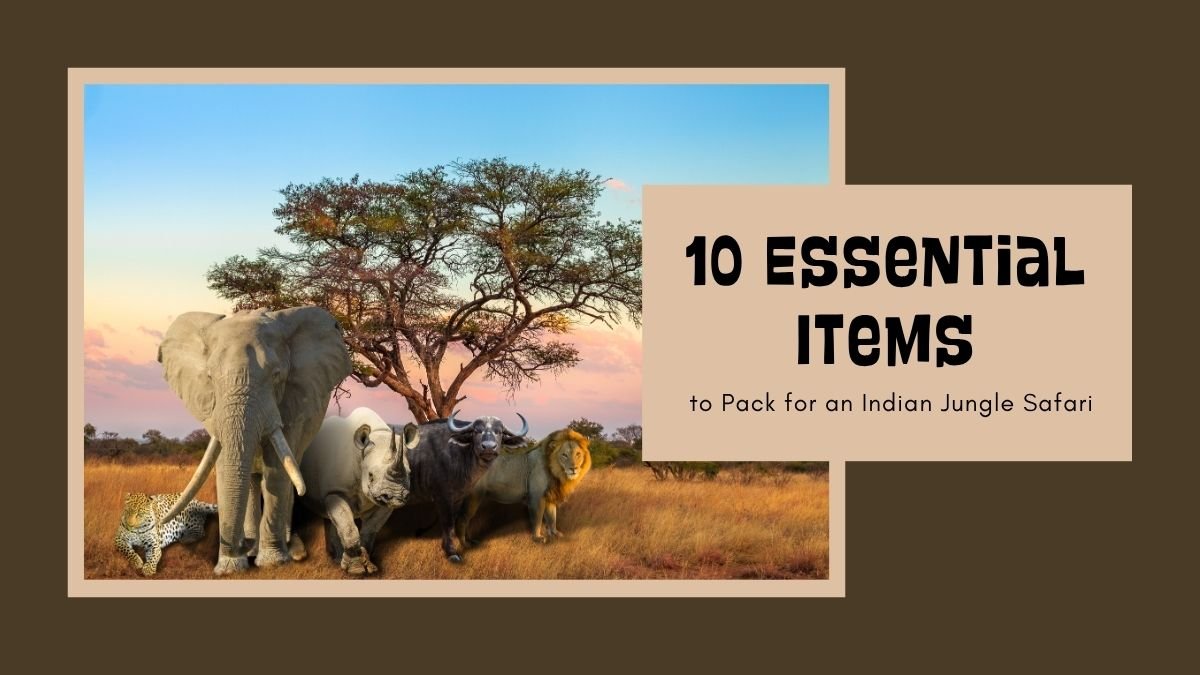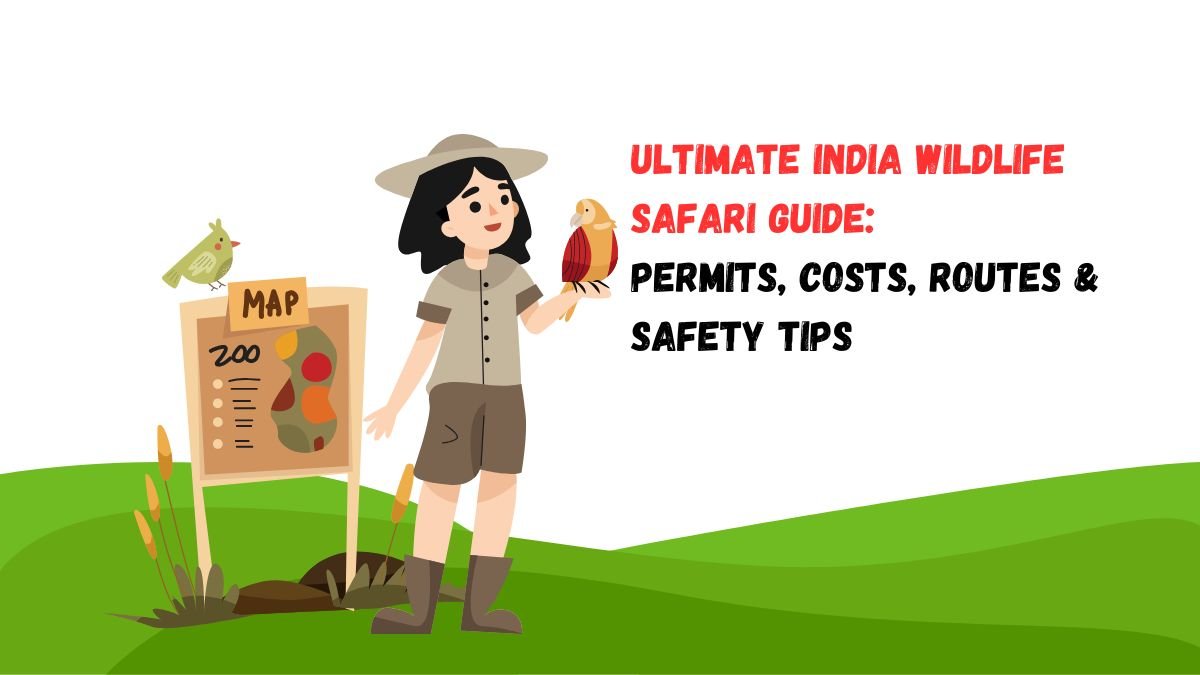If you are going on a jungle safari for the first time, then this question must be going around in your mind – “What should I take with me?”
This is not a normal trip. It is neither like a city tour, nor a comfortable tour with a hotel stay. Jungle safari is an exciting but challenging experience, and proper preparation is very important for it.
In this article, we will talk about those 10 very important things, which can make your jungle safari easy, fun and safe.
1. Right clothes and shoes
Do not wear bright and heavy clothes in jungle safari. Animals get scared or become cautious of bright colors. Therefore, you should wear clothes that blend in with nature.
What to wear:
- Light, comfortable and body-covering clothes.
- Earth tones like green, brown, khaki.
- If it is summer, then thin cotton shirt, track pants, cap and scarf to protect from the sun.
- Jacket, sweater and head-covering muffler in winter.
Footwear: Waterproof and sturdy sneakers or trekking shoes.
Sample: If you are going to Pench National Park and it is October, then keep in mind both the cold morning and hot afternoon.
2. Camera and essential photography gear
It is a matter of luck to see rare animals in the forest, but capturing them well depends on your preparation.
Tips for the camera:
- A lens with a zoom of at least 300mm or more.
- Keep extra memory card and batteries.
- Also keep camera cleaner and a small towel.
- A strap to hang the camera on the neck and a camera bag with a bean bag or cushion to carry it.
Tip: Photos can also be taken from mobile, but with a telephoto lens you will be able to capture animals sitting far away well.
3. Binoculars
Be it a lion, leopard or a rare bird – these animals do not come close in the forest. The guides show you from a distance.
Why is it important?
- A good quality 8x to 10x zoom binoculars help you see animals clearly.
- Safari is a group event, and if you don’t have your own binoculars, you will have to borrow them from others.
Tip: Each person should carry their own binoculars so that the experience is complete and personal.
4. First-aid kit
Although safari guides have first-aid kits, having your own kit is a sign of being a smart traveler.
What to include?
- Malaria medicine, fever-cold tablet, painkiller, diarrhea medicine.
- Band-aid, antiseptic cream, cotton, emergency inhaler or painkiller.
- If you are on any regular medication, carry medicines for the entire trip.
Tip: Keep them in a small box in your bag so that they can be taken out easily.
5. Waterproof backpack
Dust, mud, humidity and sometimes rain are common in the jungle. So a waterproof bag is a must to keep your essentials dry and safe.
A good backpack should be:
- Water-resistant and dust-proof.
- Multiple chambers to keep camera, binoculars, medicines separately.
- Lightweight and comfortable.
Tip: Keep a small polythene or trash bag in your bag to keep wet clothes or bottles separate if needed.
6. Skin protection and sunglasses
The sunlight can be intense in the jungle and there is a lot of dust.
What to pack:
- Sunscreen lotion (at least SPF 30)
- Lip balm and moisturizer
- Sunglasses with UV protection
- Mosquito and insect repellent spray or cream
- Wet wipes and tissue paper
Tip: If your skin is sensitive, then consult a doctor and carry the right lotion.
7. Power bank and extra adapter
Charging points are not available everywhere in the forest. If your camera or phone stops working, the fun of the safari will be incomplete.
So what to pack?
- Power bank of at least 10,000 mAh
- Travel adapter (if going to another state or country)
- Multiplug so that 2-3 devices can be charged simultaneously
8. Guidebook and map
If you have not gone on a safari before, then the guidebook can prove to be a reliable companion.
Its benefits:
- Information about the special animals, birds and flowers of each national park.
- You get to know which animals are seen in which season.
- By keeping a map with you, you can remember the route and mark the location.
Tip: Guidebooks are very helpful in bird watching – because it is not easy to identify every bird.
9. Snacks and water
The safari route is long. Sometimes the lunch time gets extended or if you see an animal, you do not know the time.
So what to keep?
- 2 liter water bottle
- Dry fruits, energy bars, peanuts, puffed rice or your favorite light breakfast
- If you are with children, then definitely keep biscuits, fruit juice or snacks for them
Tip: If you are traveling in summer, then also keep ORS powder or lemonade, so that the body remains hydrated.
10. Headlamp or torch
If you are planning to stay overnight in the jungle — like in Corbett’s forest houses or Satpura camps — electricity is not always available.
Benefits of a headlamp:
- Headlamps help you read a book, write a journal or go out of the tent at night.
- If it’s night trekking in the jungle, the path is clearly visible.
- Having light without carrying anything in your hands is very convenient.
Conclusion: Smart packing = great safari
A jungle safari is an experience that you don’t get many times in your life. So it’s important to go with the right preparations so that every moment of the safari is relaxing and exciting — and not filled with the feeling of “wish I had brought this with me.”









